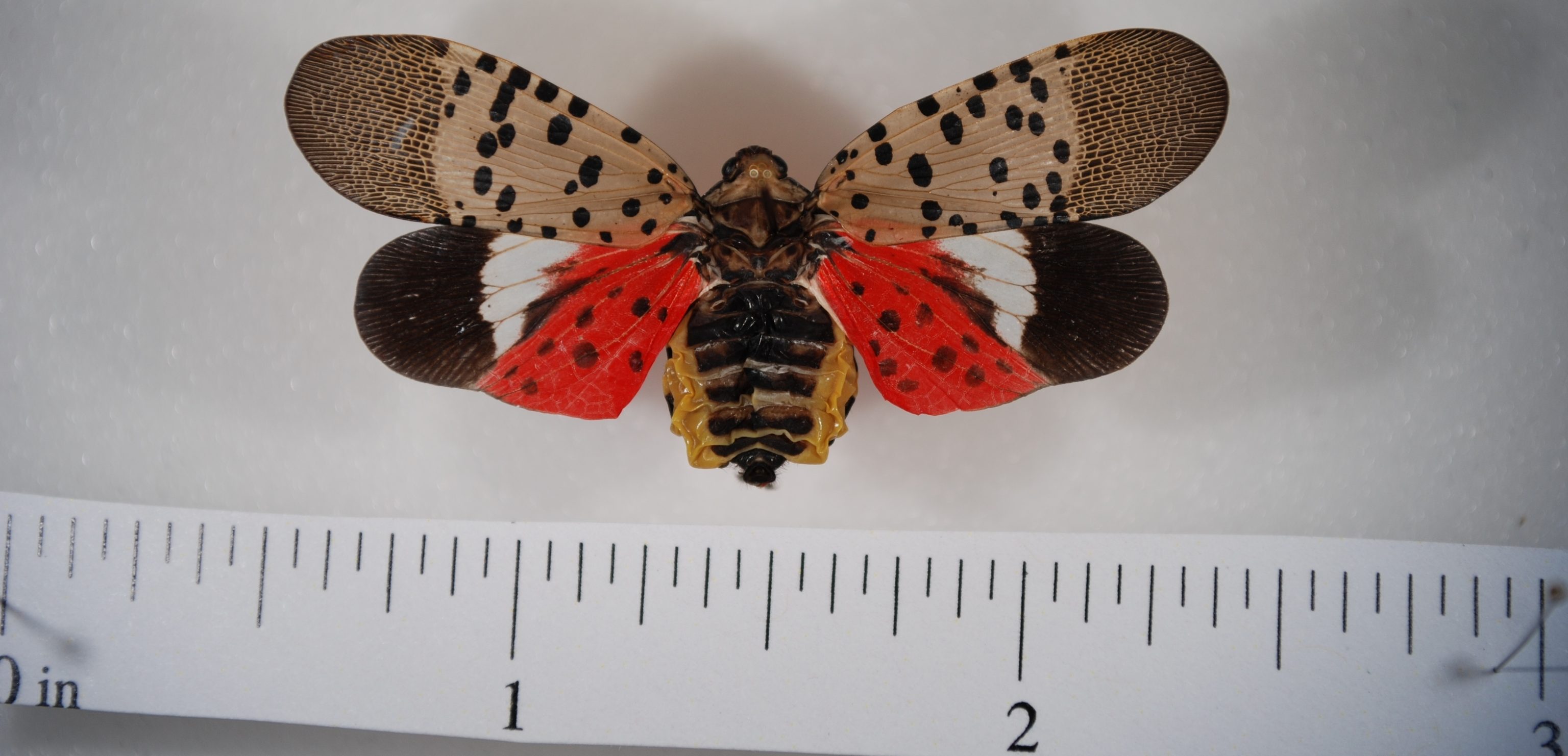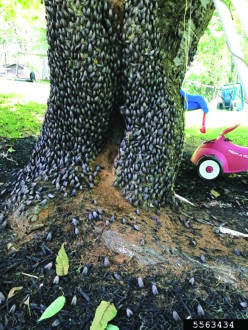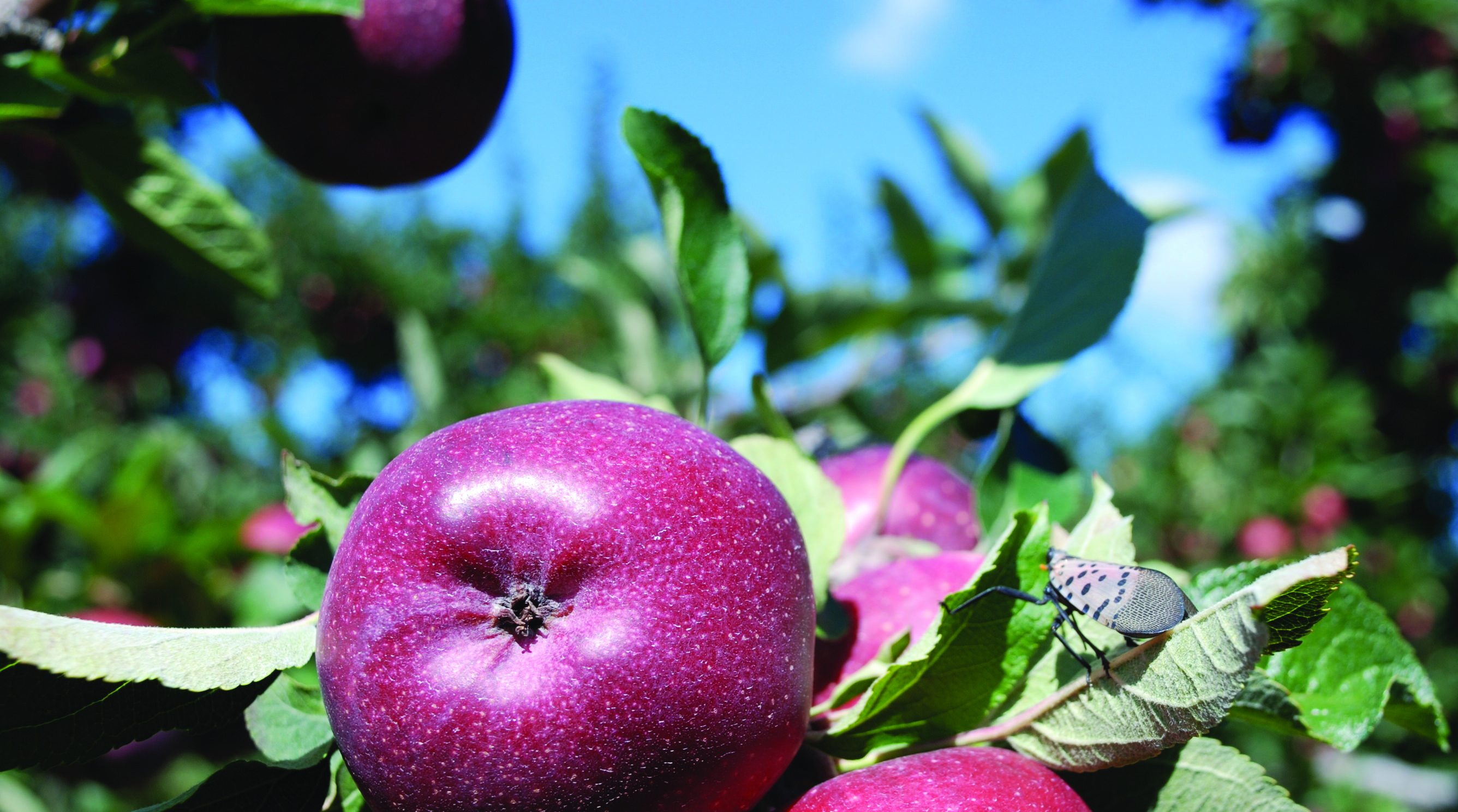

Mar 13, 2019Pennsylvania growers struggle with spotted lanternfly
The Mid-Atlantic and Midwest are better known for apple production than wine, but it is winegrape growers who perhaps have the most to lose from the latest pest threatening that region.
Spotted lanternfly (SLF) is in Pennsylvania and is likely to spread to New York and Michigan, Extension agents say.
“We are hoping to delay this as much as possible with the current control program in place in Pennsylvania, New Jersey and Virginia,” said Heather Leach, an Extension associate with Penn State University’s (PSU) Department of Entomology. “This year, single detections of adult SLF were found in Connecticut, Delaware, Maryland and New York (currently, no population is verified in these states). This highlights that SLF is a good hitchhiker and spread is likely.”
New York state and Michigan are susceptible to SLF infestations.
“Based on modeling, we expect if it does hit these regions, it will likely be able to establish in them,” Leach said.
Profile of a pest


SLF is an invasive planthopper that feeds on hardwood trees and hops as well as fruit trees, ornamentals and grapevines. Host plants may ooze sap and wilt, show leaf curling, and may even die.
“Grapevines are being hit hard by SLF, and this is the crop where we are seeing a significant economic loss,” Leach said.
“After heavy populations of SLF, growers have experienced vines that could not survive the winter or vines that survived but did not produce fruit in the following year. Up to 90 percent yield loss has been observed in grapevine.”
She added that while SLF also feeds on apples, peaches and other tree fruit, she said they’ve done this for only a few weeks in mid-late September before moving onto other hosts.
Pennsylvania has a growing local wine scene with more than 200 wineries that produce more than 1 million gallons of wine a year, according to the Pennsylvania Winery Association. Grape growers in the region are concerned about SLF.
Leach recently conducted a survey of growers in the region.
“We found that most of the grape growers were already aware of this pest and the threat it poses, but they are not knowledgeable on how to control it,” she said. “This, of course, is understandable, as we are still learning about how to control it ourselves! The priorities from these growers were to develop insecticide recommendations, develop biological control methods, and determine the impact of SLF on long-term vine health. These are key issues we plan to be addressing in our future research.”
Field intel


There are already, however, a few recommendations for discouraging the bugs. Julianna Wilson, a tree fruit integrator for Michigan State University’s Department of Entomology, recently spoke about the bugs at the Great Lakes Fruit, Vegetable and Farm Market EXPO in Grand Rapids, Michigan. She offered a few basic tips:
- Stop the spread of spotted lanternfly by keeping an eye out for adults, nymphs and egg masses. Sightings can be reported to Extension agents or at https://extension.psu.edu/have-you-seen-a-spottedlanternfly.
- Scrape egg masses off tree trunks and other flat surfaces where they are laid – this will kill the eggs.
- Band some trees to catch nymphs and monitor the population level.
- Remove invasive Tree of Heaven, aka Chinese Sumac or stinking sumac, as this is SLF’s favorite host.
- Apply insecticides. In September, PSU conducted insecticide efficacy trials for adult spotted lanternfly on potted grapevines.
Five products were found to have killed more than 50 percent of SLF up to seven days after application, and two products, Actara and Brigade, were effective up to 14 days after application.
“To be honest, SLF is really easy to kill compared to most other insect pests in these systems,” Leach said. “We’re finding that they’re susceptible to most classes of insecticides, including action with some organic products (i.e. Neem oil, insecticidal soaps). However, the problem is that SLF are feeding on so many things in the surrounding landscape that even after a grower treats their orchard/vineyard, they re-infest the trees/vines within a few days. SLF peak populations also coincide with harvest or just before harvest, limiting the options available to growers (to be compliant with preharvest intervals). This has been our biggest struggle, and in 2019, we plan to be evaluating several different spray programs to determine the best sequence and products to be used.”
Other strategies


Some encouraging discoveries have been that SLF seems to be susceptible to many of the same things that gypsy moths are.
“We have identified two different fungal pathogens that attack SLF in the field,” Leach said. “One of these is closely related to the gypsy moth fungal pathogen, but it is not the same one. These appear promising, but we still need lots of lab and field research to understand if these are potential products to be used. Testing on Beauveria products against SLF is in its preliminary stage, but this appears promising as a control measure. Ann Hajek out of Cornell (University) is leading this research.”
Generalized predators such as praying mantis are not thought to have much effect on SLF individually. Leach said there are several parasitoids identified in China that attack SLF.
“These are parasitoids not known to occur in the U.S., so they are currently held in a quarantine lab to undergo studies on SLF and other closely-related insects,” she said. “Importing these species could be a very promising tactic to reduce SLF populations, but requires lots of money and time to test for potential negative effects.”
For growers who don’t yet have SLF, Leach recommends scouting the farm (especially the wood edge) for Tree of Heaven.
“If you have it, either consider removing it, or use it as a monitoring tool to watch for spotted lanternfly,” she said. “Other plants that appear to be preferred by SLF include grapes (wild and cultivated), maple (silver and red, mostly), river birch, willow, and others.”
– Stephen Kloosterman, Associate Editor
Top photo: This immature spotted lanternfly nymph was photographed in the Boyertown area of Berks County, Pennsylvania. Photos: Lawrence Barringer, Pennsylvania Department of Agriculture, Bugwood.org














